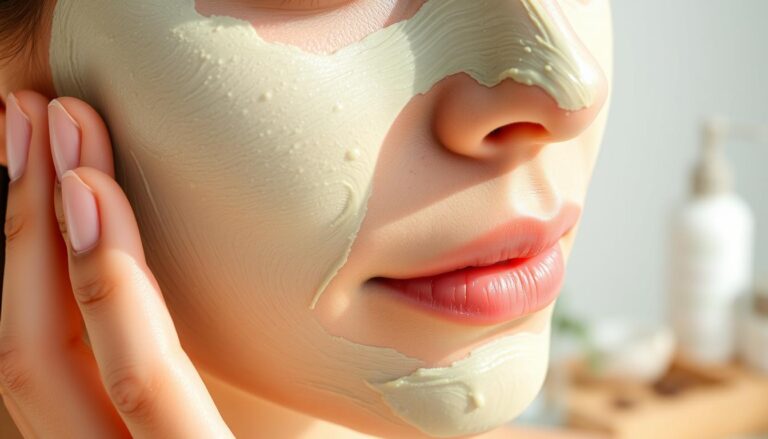At Glowskinhub.com, we believe beauty isn’t just a look—it’s a feeling

How to prevent hair breakage while sleeping
A good night’s sleep is essential for overall health, and Hair Care is no exception. Many of us are unaware that our sleeping habits can significantly impact the health of our hair, leading to hair breakage. Friction and tension on the hair shaft while sleeping can cause damage, resulting in brittle and fragile hair.
Understanding the importance of hair protection during sleep is vital. By adopting simple Hair Care routines, individuals can minimise the risk of hair breakage and maintain healthy, luscious locks.
Key Takeaways
- Reduce friction to minimise hair breakage
- Use gentle Hair Care products before bed
- Protect your hair with a silk or satin pillowcase
- Avoid tight hairstyles that cause tension
- Keep your hair moisturised to prevent dryness
Understanding Hair Breakage: Causes and Signs
Understanding the causes and signs of hair breakage is crucial for maintaining healthy hair. Hair breakage can occur due to various factors, and identifying these causes is the first step towards prevention.
Common Causes of Nighttime Hair Breakage
Nighttime hair breakage can be attributed to several factors, including mechanical stress, friction, and Hair Care routines. Friction between hair and pillowcase is a significant contributor, as it can cause hair cuticles to lift and lead to breakage. Other factors include tied hairstyles that are too tight and the use of harsh hair products.
| Cause | Description | Prevention Method |
|---|---|---|
| Friction | Rubbing against pillowcase | Use a silk or satin pillowcase |
| Tied Hairstyles | Tight braids or ponytails | Opt for loose hairstyles |
| Hair Products | Harsh chemicals | Use gentle, sulfate-free products |
How to Identify If You’re Experiencing Sleep-Related Breakage
To determine if you’re experiencing sleep-related hair breakage, look out for signs such as increased hair shedding in the morning, split ends, and frizz. If you notice these symptoms, it may be necessary to adjust your Hair Care routine and sleeping habits.
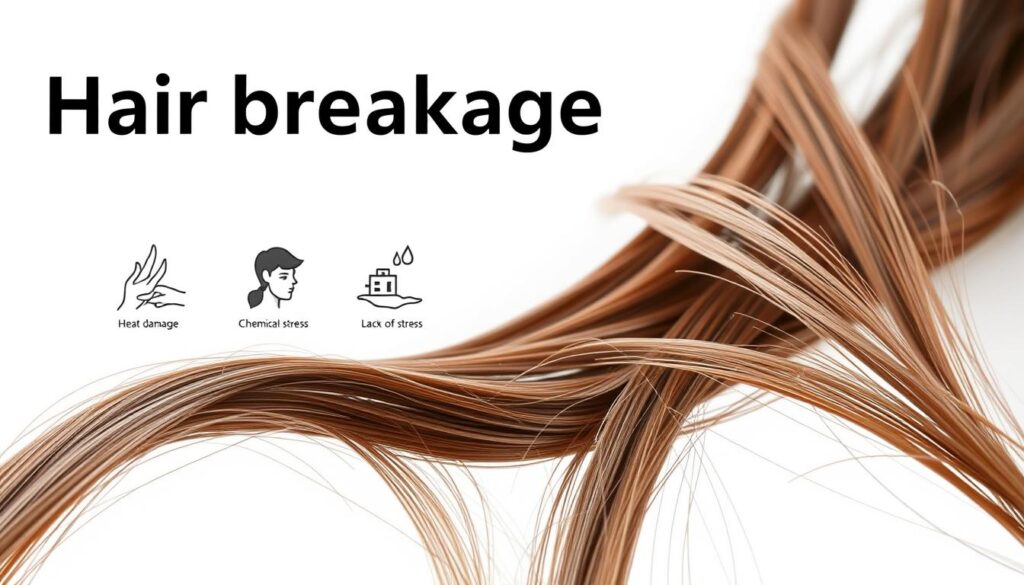
The Science Behind Hair Damage During Sleep
The mechanisms behind hair damage during sleep involve a complex interplay of friction, tension, and pressure. When we sleep, our hair is subjected to forces that can lead to damage and breakage. Understanding these forces is crucial for devising strategies to mitigate hair damage.
Friction and Its Effects on Hair Cuticles
Friction is a significant factor in hair damage during sleep. As we move during the night, our hair rubs against the pillowcase, leading to friction that can damage the hair cuticle. This damage can result in hair breakage and the formation of split ends. The extent of the damage depends on the material of the pillowcase; cotton, for instance, can cause more friction than silk or satin.
As noted by Hair Care experts, “The type of fabric used for pillowcases can significantly impact hair health.”
“Cotton pillowcases can cause friction, leading to hair breakage, whereas silk or satin pillowcases reduce friction, preserving hair integrity.”
How Sleep Position Affects Hair Health
Sleep position also plays a critical role in hair health. Different sleep positions exert varying levels of tension and pressure on the hair. For example, sleeping on your side or stomach can cause more hair friction and tension compared to sleeping on your back.
| Sleep Position | Effect on Hair |
|---|---|
| Back | Minimal friction and tension |
| Side | Moderate friction and tension |
| Stomach | High friction and tension |
By understanding how sleep position affects hair health, individuals can adopt strategies to minimize damage, such as using a silk or satin pillowcase and adjusting their sleep position.
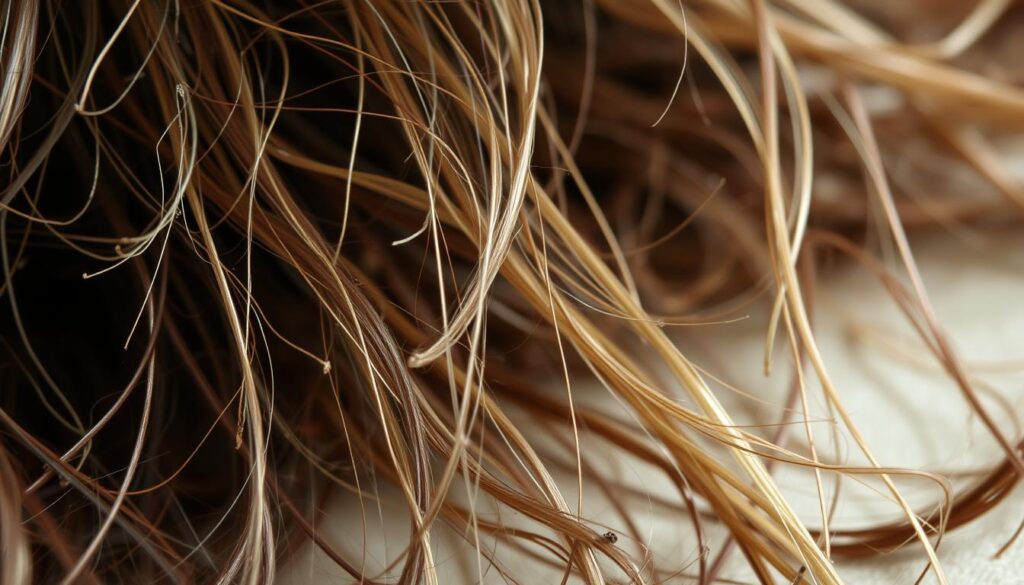
Choosing the Right Pillowcase to Prevent Breakage
The fabric of your pillowcase can significantly impact your hair’s health while you sleep. Friction between your hair and the pillowcase can lead to breakage, frizz, and tangles. Therefore, selecting a pillowcase made from the right material is crucial for maintaining healthy hair.
Silk vs. Satin vs. Cotton: Which Is Best for Hair?
When it comes to choosing a pillowcase for hair protection, the debate often centres around silk, satin, and cotton. Silk and satin are both recommended for their smooth surfaces, which reduce friction and prevent hair breakage. While silk is a natural protein fibre, satin is a weave that can be made from various materials, including synthetic fibres. Cotton, on the other hand, is more absorbent and can cause friction, leading to hair damage.
Here are some key differences:
- Silk: Hypoallergenic, gentle on hair, and regulates temperature well.
- Satin: Smooth surface reduces friction, affordable, and available in various materials.
- Cotton: Breathable, absorbent, but can cause friction and dryness.
Top Pillowcase Recommendations for Hair Protection
For optimal hair protection, consider the following:
- Choose silk or satin pillowcases for their smooth surfaces.
- Opt for high thread count for durability and comfort.
- Consider mulberry silk for its superior quality and softness.
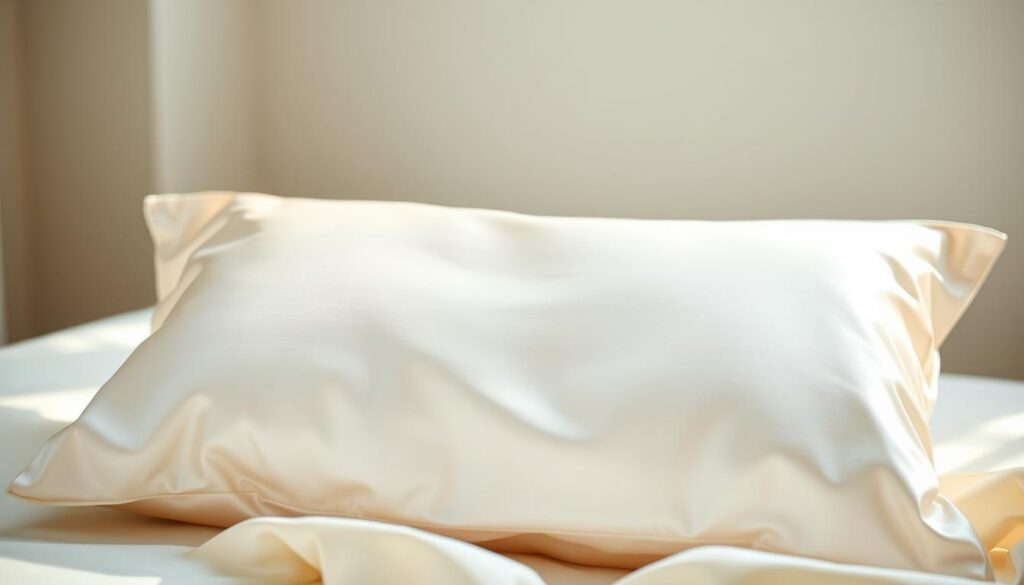
By making an informed choice about your pillowcase, you can significantly reduce hair breakage and wake up to healthier, more manageable hair.
Protective Hairstyles to Wear While Sleeping
Protective hairstyles are a simple yet effective way to safeguard your hair during sleep. By adopting the right styles, you can significantly reduce hair breakage and wake up to healthier-looking hair. Here, we’ll explore some of the best protective hairstyles to wear while sleeping.
Loose Braids and Plaits for Minimal Tension
Loose braids and plaits are excellent options for protecting your hair while you sleep. These styles minimise tension on the hair follicles, reducing the risk of breakage. To create a loose braid, start by gently detangling your hair, then divide it into sections and braid, making sure not to pull the strands too tight. Loose braids are particularly beneficial for those with fragile or damaged hair.
The Pineapple Method for Curly and Natural Hair
The pineapple method is a popular technique for preserving curly and natural hair overnight. This involves gathering your hair into a loose ponytail or bun on top of your head, resembling a pineapple. This style helps to preserve curl definition and reduce frizz. To achieve this look, use a soft hair tie and gently gather your hair, making sure not to cause tension on the hairline.
Low Buns and Twists for Long Hair Protection
Low buns and twists are ideal for protecting long hair while sleeping. These styles keep your hair secure and minimise tangling, which can lead to breakage. To create a low bun, detangle your hair, then twist it into a low bun, securing it with bobby pins. For added protection, consider wrapping your hair in a silk or satin scarf before bed.
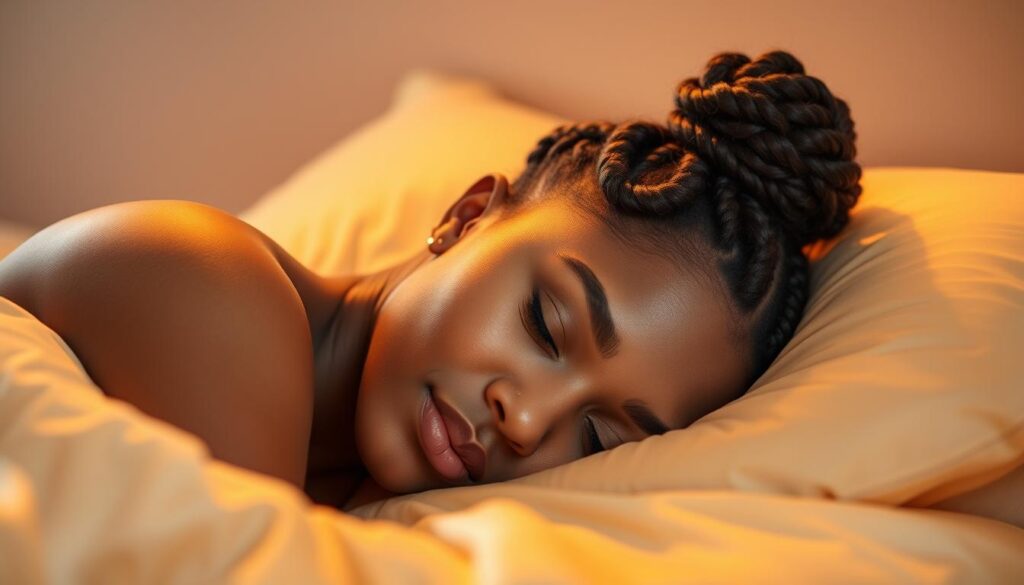
How to Prevent Hair Breakage While Sleeping: Essential Techniques
To keep your hair healthy and strong, it’s essential to learn how to prevent breakage during sleep. Nighttime Hair Care is a crucial aspect of maintaining your hair’s overall health.
Step-by-Step Guide to Preparing Hair for Bed
Preparing your hair for bed involves a few simple steps that can significantly reduce breakage. First, gently detangle your hair using a wide-tooth comb or a detangling brush to minimize knots and tangles that can cause breakage during sleep.
Next, apply a leave-in conditioner or a hair Serum to lock in moisture and protect your hair from friction. For added protection, consider braiding or bun-ing your hair loosely to reduce movement during sleep.
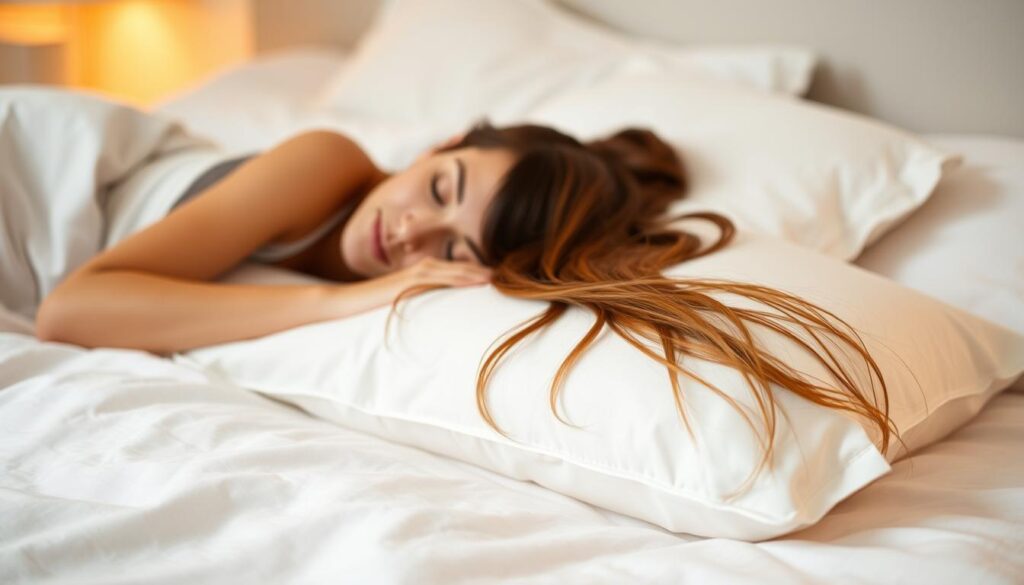
Nighttime Hair Wrapping and Protection Methods
Wrapping your hair at night can be an effective way to prevent breakage. You can use a silk or satin scarf to wrap your hair, or opt for a bonnet or cap made from these materials. These fabrics are gentler on hair than cotton, reducing friction and preventing cuticle damage.
| Method | Description | Benefits |
|---|---|---|
| Hair Wrapping | Wrapping hair in a silk or satin scarf | Reduces friction, prevents cuticle damage |
| Braiding or Bun-ing | Loosely braiding or bun-ing hair | Minimizes hair movement, reduces tangles |
| Using a Bonnet or Cap | Wearing a silk or satin bonnet or cap | Protects hair from friction, retains moisture |
By incorporating these techniques into your nighttime routine, you can significantly reduce hair breakage and wake up to healthier, stronger hair.
Pre-Sleep Hair Care Routine
To prevent hair breakage while sleeping, it’s essential to follow a thoughtful pre-sleep Hair Care routine. This involves a series of steps that prepare your hair for the night ahead, minimising damage and promoting healthier hair.
Gentle Detangling Methods
Gentle detangling is a critical step before sleep. Using a wide-tooth comb or a detangling brush, start from the ends and work your way up to minimise tangles and knots. This gentle approach reduces breakage and prevents unnecessary stress on the hair.

Moisturising Products for Overnight Protection
Applying the right moisturising products before bed can significantly enhance hair health. Look for products containing natural ingredients like coconut oil, shea butter, or argan oil. These ingredients help lock in moisture, reducing dryness and breakage.
Applying Overnight Treatments
Overnight treatments can provide an intense dose of nourishment to your hair. Apply a hair mask or a deep conditioning treatment before bed, focusing on the ends, which are more prone to dryness. Leave it on overnight and wash it out in the morning for optimal results.
By incorporating these steps into your pre-sleep routine, you can significantly reduce hair breakage and wake up to healthier, more resilient hair.
Hair Accessories That Prevent Nighttime Damage
To prevent hair damage while sleeping, it’s essential to use hair accessories that are designed for this purpose. Hair accessories can play a significant role in reducing friction, preventing tangles, and minimizing breakage. By choosing the right accessories, you can wake up with healthier, more manageable hair.
Silk and Satin Bonnets, Caps and Scarves
Silk and satin bonnets, caps, and scarves are excellent choices for protecting your hair while you sleep. These materials are gentle on hair and reduce friction, which can cause breakage. Silk bonnets, in particular, are known for their ability to keep hair moisturized and prevent frizz. When choosing a bonnet or cap, look for one that is made from high-quality silk or satin and is comfortable to wear.
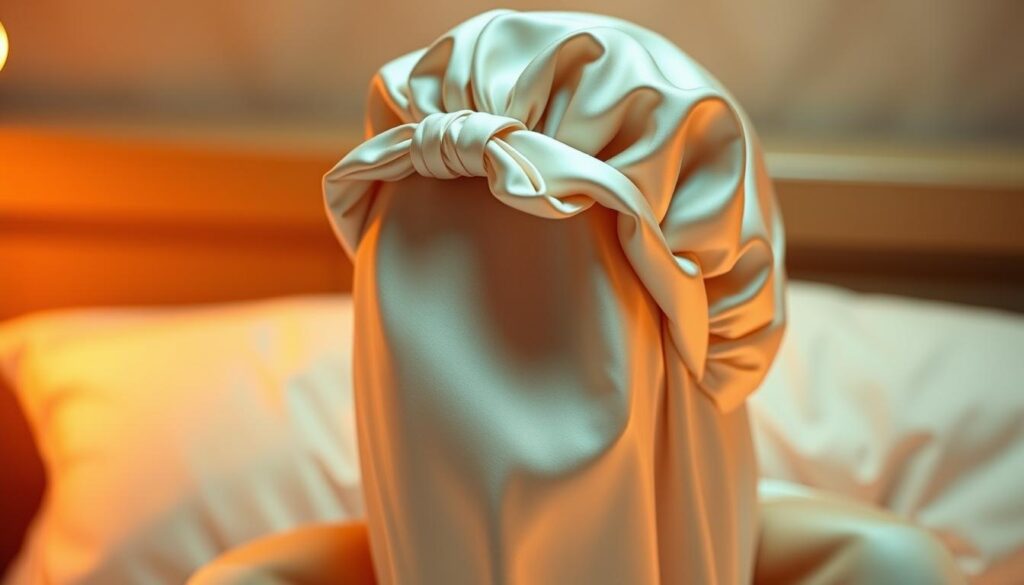
| Material | Benefits | Best For |
|---|---|---|
| Silk | Reduces friction, keeps hair moisturized | Dry or damaged hair |
| Satin | Prevents frizz, gentle on hair | Curly or textured hair |
Hair-Friendly Scrunchies and Damage-Free Hair Ties
Hair-friendly scrunchies and damage-free hair ties are also essential for preventing nighttime hair damage. Look for scrunchies made from silk or satin, as these materials are gentler on hair than cotton or other fabrics. When it comes to hair ties, opt for ones that are designed to minimize breakage, such as those with a soft, fabric-covered elastic or spiral hair ties that distribute tension evenly.
- Choose scrunchies made from silk or satin for reduced friction.
- Opt for hair ties with soft, fabric-covered elastic.
- Consider spiral hair ties for even tension distribution.
Special Considerations for Different Hair Types
Hair Care during sleep varies significantly across different hair types, necessitating specific considerations. Understanding the unique needs of your hair is crucial for preventing breakage and maintaining its health.
Solutions for Fine and Fragile Hair Types
For fine and fragile hair, it’s essential to minimise manipulation and reduce tension while sleeping. Using a silk or satin pillowcase can help reduce friction and prevent breakage. Additionally, a loose, gentle hairstyle such as a low ponytail or a soft bun can help protect fine hair.
Protecting Curly, Coily and Textured Hair Overnight
Curly, coily, and textured hair requires extra moisture and protection. The pineapple method, where hair is gathered at the top of the head, can help preserve curls and reduce frizz. Using a silk or satin bonnet or scarf can also help lock in moisture and protect the hair from breakage.
Strategies for Coloured and Chemically Treated Hair
Coloured and chemically treated hair is more prone to damage and requires special care. Using a colour-protecting shampoo and a moisturising conditioner can help maintain hair health. When sleeping, using a microfibre towel or an old t-shirt to gently blot excess moisture can reduce breakage.
| Hair Type | Recommended Sleep Care | Products to Use |
|---|---|---|
| Fine and Fragile | Loose hairstyles, silk/satin pillowcase | Gentle shampoo, lightweight Serum |
| Curly, Coily, Textured | Pineapple method, silk/satin bonnet | Moisturising mask, curl activator |
| Coloured and Chemically Treated | Microfibre towel, colour-protecting products | Colour-protecting shampoo, moisturising conditioner |
Morning After Care: Minimising Manipulation
To preserve your hair’s integrity, it’s essential to adopt a thoughtful morning Hair Care approach. Minimising manipulation in the morning can significantly reduce breakage and enhance overall hair health.
Gentle Wake-Up Routines to Preserve Hair Integrity
Starting your day with a gentle Hair Care routine can make a significant difference. “A gentle morning routine is not just about aesthetics; it’s about maintaining the health of your hair,” says Hair Care expert, Philip Kingsley. Begin by gently removing any overnight protective styles or coverings. For those with longer hair, a gentle detangling process starting from the ends and working upwards is advisable.
Using a wide-tooth comb or a detangling brush can help minimise breakage. It’s also beneficial to use a microfibre towel or an old t-shirt to gently blot excess moisture, rather than rubbing vigorously with a regular towel.
Addressing Overnight Tangles Without Causing Breakage
Overnight tangles are a common issue, especially for those with curly or long hair. To address these tangles without causing breakage, apply a leave-in conditioner or a detangling spray before gently working out the knots with your fingers or a wide-tooth comb.
Key tips for detangling:
- Work from the ends upwards to prevent tangling the hair further.
- Use a generous amount of conditioner or detangling spray to lubricate the hair.
- Avoid using fine-tooth combs or brushes with metal teeth, as they can cause significant breakage.
By adopting these gentle techniques, you can minimise hair manipulation and reduce the risk of breakage, ensuring healthier and more resilient hair over time.
Long-Term Habits for Stronger, Break-Resistant Hair
Achieving resilient hair that withstands nighttime damage involves cultivating long-term care routines. By focusing on long-term Hair Care, individuals can significantly reduce the occurrence of hair breakage.
A key aspect of long-term Hair Care is ensuring proper nutrition for hair strength. A diet rich in vitamins and minerals, particularly those that promote hair health such as biotin, vitamin E, and omega-3 fatty acids, can significantly enhance hair resilience.
Nutrition and Hydration for Hair Strength
A well-balanced diet plays a crucial role in hair health. Foods high in antioxidants, such as berries and leafy greens, help protect hair follicles from damage. Additionally, adequate hydration is essential for maintaining hair’s elasticity and moisture balance.
Regular Treatments to Fortify Hair Against Nighttime Damage
Incorporating regular hair treatments into one’s Hair Care routine can provide an extra layer of protection against breakage. Treatments such as hair masks, deep conditioning, and protein treatments help to fortify hair against damage.
By combining a balanced diet with regular hair treatments, individuals can develop long-term habits that promote stronger, more resilient hair.
Conclusion
By incorporating the discussed habits and techniques into your daily routine, you can significantly reduce hair breakage while sleeping. Simple changes, such as switching to a silk or satin pillowcase and adopting protective hairstyles, can make a substantial difference in maintaining healthy hair.
Preventing hair breakage requires a combination of the right Hair Care tips and a gentle approach to handling your hair. By being mindful of your sleep position, using hair-friendly accessories, and following a pre-sleep Hair Care routine, you can promote stronger, break-resistant hair.
As you start your journey towards healthier hair, remember that consistency is key. Regularly moisturising your hair, minimising manipulation, and being gentle when detangling can all contribute to achieving your hair goals. With these tips, you can wake up to healthier, more resilient hair every day.

